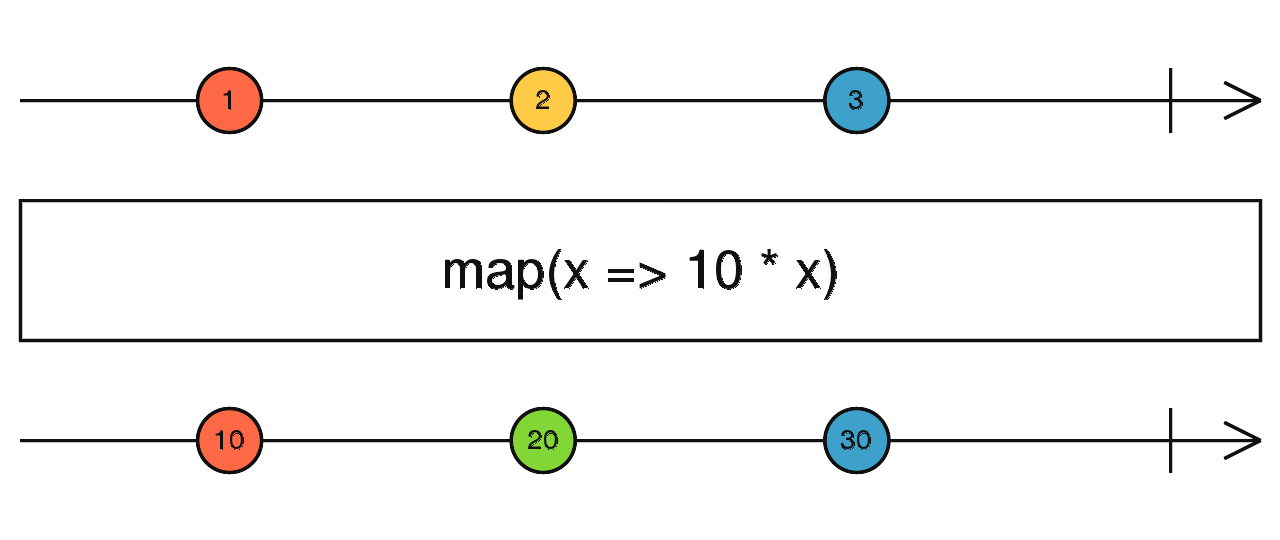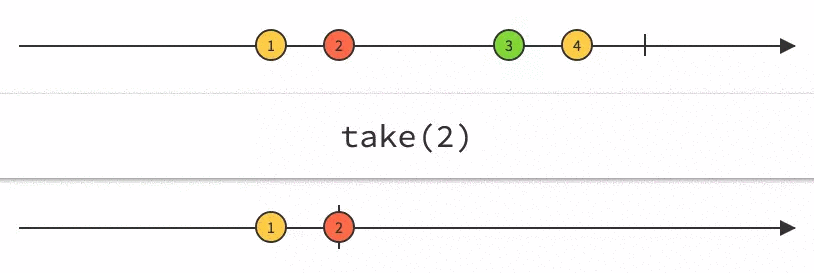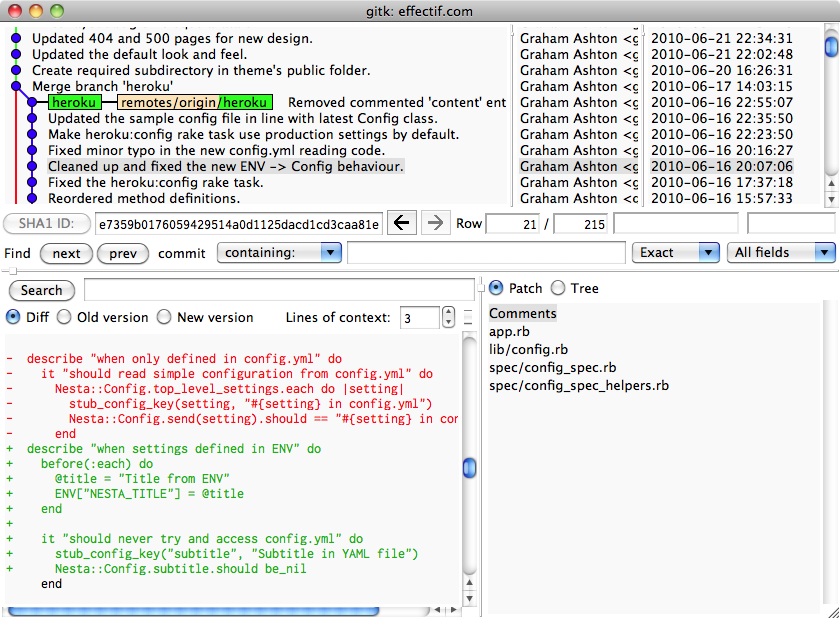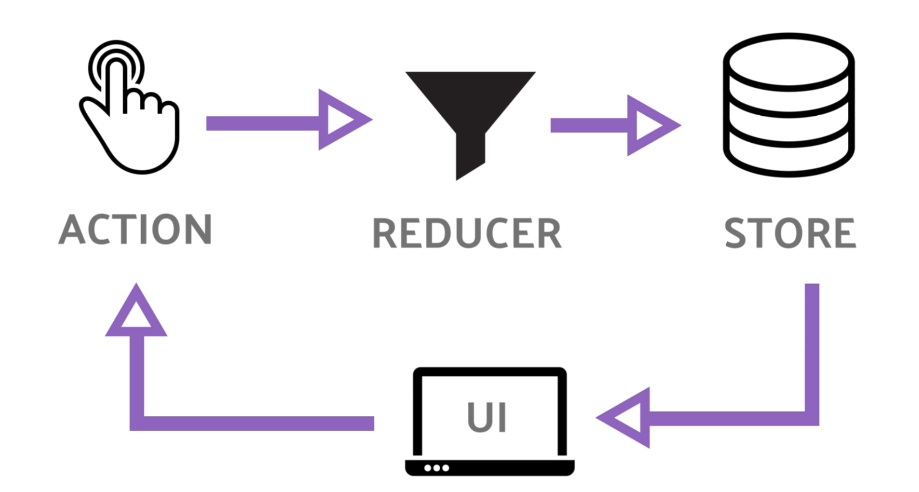Workshop:
Advanced RxJS patterns to reactive interfaces

William Grasel
@willgmbr
fb.me/wgrasel

define:
reactive programming
"Reactive programming is a programming paradigm oriented around data flows and the propagation of change."


What else can be a Stream?
- User actions
- Systems events
- Application state
- Validation and businesses rules
- Any data source, async or not!


RxJS
The ReactiveX library for JavaScript.
[1, 2, 3]
.map(i => i * 2) // [2, 4, 6]
.filter(i => i > 5) // [6]
.concat([10, 20, 30]) // [6, 10, 20, 30]Operators❤️
Observable.of(1, 2, 3)
.map(i => i * 2)
.filter(i => i > 5)
.concat(
Observable.of(10, 20, 30)
)
Observable.fromEvent(document, 'click')
.map(i => i * 2)
.filter(i => i > 5)
.concat(
Observable.fromEvent(document, 'blur')
)
Observable.from(function* (){ yield 9; })
.map(i => i * 2)
.filter(i => i > 5)
.concat(
Observable.from([10, 20, 30])
)
.subscribe(console.log)
Array.of(1, 2, 3)
.map(i => i * 2)
.filter(i => i > 5)
.concat(
Array.of(10, 20, 30)
)
Observable.interval(500)
.map(i => i * 2)
.filter(i => i > 5)
.concat(
Observable.of(10, 20, 30)
)
Observable.from(function* (){ yield 9; })
.map(i => i * 2)
.filter(i => i > 5)
.concat(
Observable.from([10, 20, 30])
)
How do I find my magical operator?


Marbles Diagrams

Animated Diagrams
Let's code!

Typeahead Search

Reactive Patterns
Immutability!
Every state must be part of the flow!
NEVER subscribe inside another subscribe!
@Component()
export class UserAddressComponent {
constructor (
user: UserService,
address: AddressService,
) {
user.getCurrentUser().subscribe(user => {
})
}
}
@Component()
export class UserAddressComponent {
constructor (
user: UserService,
address: AddressService,
) {
user.getCurrentUser().pipe(
).subscribe(user => {
this.address = address;
})
}
}
@Component()
export class UserAddressComponent {
constructor (
user: UserService,
address: AddressService,
) {
user.getCurrentUser().subscribe(user => {
address.getAddressFromUser(user).subscribe(address => {
this.address = address;
})
})
}
}
@Component()
export class UserAddressComponent {
constructor (
user: UserService,
address: AddressService,
) {
user.getCurrentUser().pipe(
mergeMap(user => this.address.getAddressFrom(user))
).subscribe(address => {
this.address = address;
})
}
}Never forget to unsubscribe!
But actually avoid do it manually!
Use Pipe Async every time the data stream goes to the template!
In all other times try to reactively unsubscribe from streams!
@Component()
export class MyComponent {
ngOnInit() {
interval(1000)
.subscribe(i => console.log(i));
}
}
@Component()
export class MyComponent {
unsubscribe = new Subject();
ngOnInit() {
interval(1000)
.subscribe(i => console.log(i));
}
ngOnDestroy() {
this.unsubscribe.next();
this.unsubscribe.complete();
}
}
@Component()
export class MyComponent {
unsubscribe = new Subject();
ngOnInit() {
interval(1000)
.pipe(takeUntil(this.unsubscribe))
.subscribe(i => console.log(i));
}
ngOnDestroy() {
this.unsubscribe.next();
this.unsubscribe.complete();
}
}Building a Reactive Architecture!
Standing on the Shoulder of Giants
Capture all changes to an application state as a sequence of events.
FOWLER, Martin. 2005
Let's model the state change as a sequence of immutable events!
Every event describe just the change to the state, not the current state!
The current state can just be discovery after execute all the chain of events!

How to use that idea at the real world?
Command Query Responsibility Segregation
FOWLER, Martin. 2011
It is an implementation of Event Sourcing
It's segregate the responsibility of the reader and the writer
Also segregate the state maintenance from side effects
Let's code!

Simple Counter

Complex Counter

We just recreated Redux!


NGRX

What about the
side effects?
The original Redux does not implements CQRS completely
@ngrx/effects
RxJS powered side effect model


redux-observable
Compose and cancel async actions to create side effects and more.
References
- Final Typeahead Search exercise code
- Final Simple Counter exercise code
- Final Complex Counter exercise code
- Reactive Programming in Angular
- RxJS - The ReactiveX library for JavaScript
- The introduction to Reactive Programming you've been missing
- NgRx - Reactive Extensions for Angular
- Awesome Reactive Programming with Angular - Youtube Playlist
- Rx Visualizer - Animated playground for Rx Observables
- Event Sourcing by Martin Fowler
- Command Query Responsibility Segregation by Martin Fowler